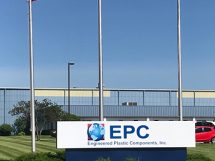
Louisville and Lexington’s effort to create a joint, internationally known advanced manufacturing super region is on track, according to those involved in the project. Coming into focus as a key issue, however, is an ability to produce enough skilled workers both to replace those entering retirement and to fuel hoped-for growth.
A report on the ongoing analysis of the combined regions’ assets and liabilities, along with a statement of specific goals and a step-by-step process to achieve them, is now expected at the beginning of 2013. The original target date was this fall.
“We want to get it right,” said Amy Liu, a Brookings Institution senior fellow who is co-director and co-founder of the Brookings Metropolitan Policy Program, which last year agreed to take on the task of producing the analysis, goals and plan document.
The task is complex. Having recognized workforce issues to address, project leaders and staff must accurately ferret out those issues’ origins to be able to craft action plans to resolve them, Liu said. Many Kentucky manufacturers are participants in the data-gathering process, but they are not of one voice on workforce conditions and on how to react.
“We are absolutely committed to delivering an initiative that will have staying power and impact,” Liu said. “It is easy to put together a report. … It is much harder to put together a catalytic initiative that will put this region on the map.”
Washington-based Brookings, one of the nation’s top public policy think tanks, has accepted only a handful of applicants into its Metropolitan Business Plan initiative. Similar projects in northeast Ohio (centered on Cleveland), in Minneapolis-St. Paul and in the Seattle region produced initiatives that began nearly a year ago. Louisville-Lexington is smaller than other MBP participants to date.

A 17-member panel of state business, industry, education, political and economic development leaders is steering efforts in the commonwealth to gather data and to collaborate with Brookings experts on goal-setting, constructing and financing a plan, and settling on initiatives to simultaneously capture Kentuckians’ attention and drive them to action.
This Bluegrass Economic Advancement Movement (BEAM), as it was dubbed by Mayors Greg Fischer and Jim Gray of Louisville and Lexington respectively, is an open-ended years-long undertaking. The broad aim is to develop a global economic reputation – with strategies that build branding for superior workmanship and productivity, and for a work ethic including lifelong learning – as a status region where companies that want their products to be known for quality will seek to locate their manufacturing facilities. The Louisville-Lexington-Bluegrass region seeks to become the heartland of U.S. advanced manufacturing.
BEAM success will mean more jobs with better pay, a resurgent middle class and a solid, growing tax base that supports the entire state. Kentucky wants to become a major exporter.
Former two-time state commerce secretary Jim Host got the BEAM steering committee organized, focused and in motion – which was what the two mayors asked of him, said Lexington’s Gray. Host now has stepped back from the chairman’s role to devote more time again to his private business interests – the iHigh.com online high school sports and events streaming service is gaining traction – but he remains a committee member.
Margaret Handmaker, director of Louisville Metro’s innovation delivery team, has been given the BEAM guidance reins until the mayors decide on a new chairman.
BEAM board members are highly engaged and results oriented, Handmaker said.
“There is a very good board,” she said. “There is so much buy-in, and it is a group that can make things happen. They want to see results.”
The BEAM effort will create multiple projects to pursue its goals, Handmaker said. Some of the work now is to “find an owner” for individual projects. Board members are committing to take some elements themselves, she said.
The overarching project will be a years-long process. Workforce and skills needs are being examined and projected for at least the next 10 years.
Actual surprises have been few, Handmaker said.
“A positive that has come out of it for me is how many companies, universities and associations are working on the future of Kentucky,” she said. “There’s a huge effort going on already.”
Gray noted that Toyota Motor Manufacturing Kentucky, whose President Wil James is a BEAM committee member, had identified future workforce needs as an issue nearly a decade ago. As a result, it formed a partnership with Bluegrass Community Technical College that has been instructive to the current process.
“It takes intention to grow jobs in core industries,” Liu explained.
On the BEAM committee’s agenda for its June 11 meeting was discussion of a launch initiative that will capture the attention and imagination of the state when a more-public phase of the long-term project begins early next year.
Mark Green is Editorial Director of The Lane Report. He can be reached at [email protected].




















Add Comment